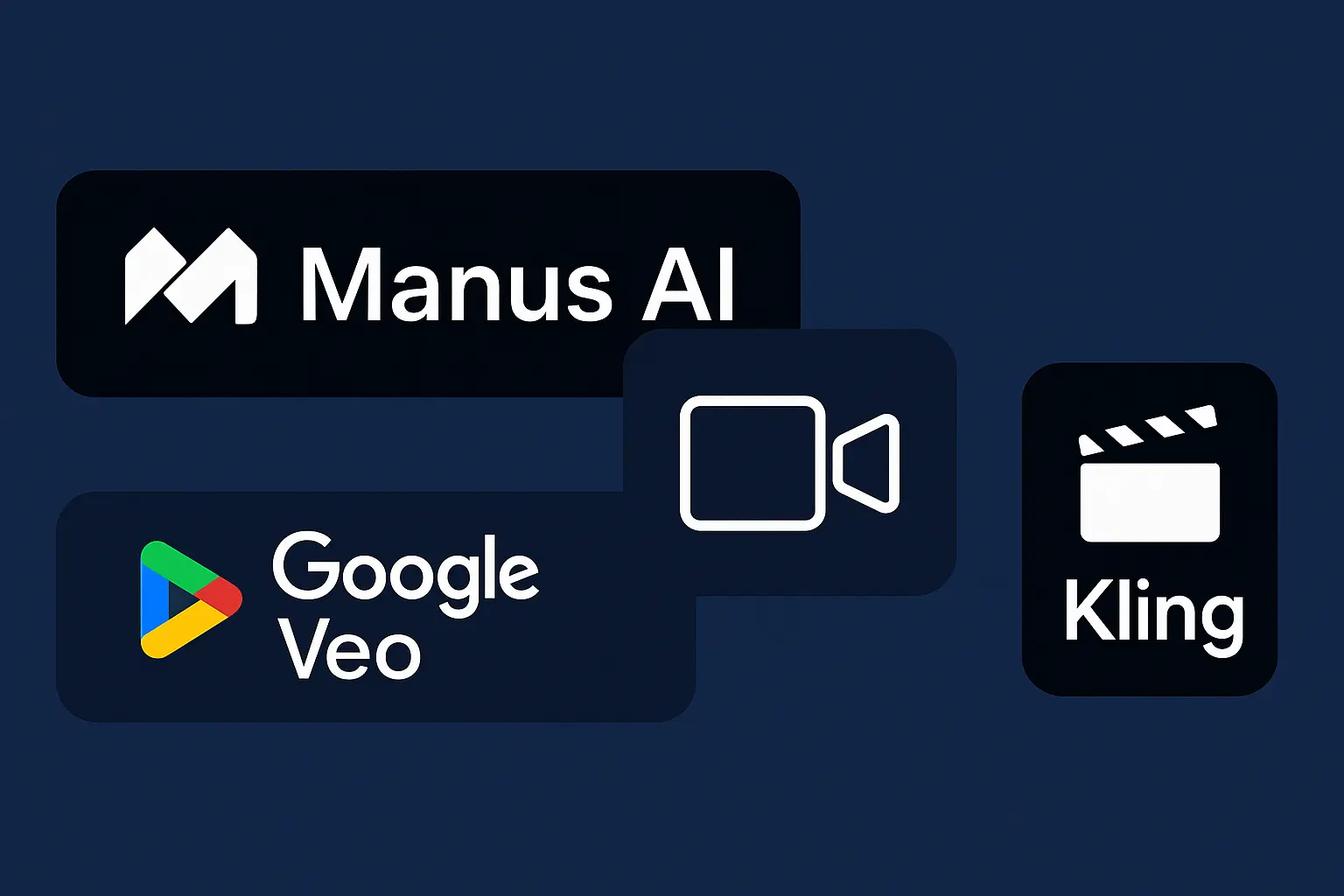The AI-driven content creation landscape is rapidly evolving, with significant advancements in text-to-video technologies. Emerging players like China’s Manus AI are introducing innovative solutions that challenge established platforms such as Google Veo and Kling AI. This article examines the latest developments, comparing these platforms and analyzing their importance for the future of digital content creation.
Manus AI: A New Contender in AI Video Generation
Manus AI, developed by the Chinese startup Butterfly Effect, has launched a text-to-video feature that transforms simple prompts into fully structured and sequenced video narratives. Unlike traditional AI chatbots, Manus employs a multi-agent system with specialized sub-agents for planning, execution, and knowledge retrieval, enabling it to autonomously manage complex workflows without continuous human input. This asynchronous operation allows users to delegate tasks that continue running even when offline. The service is currently available for early access to Basic, Plus, and Pro subscribers, with plans to open it to all users soon.
Google Veo 3 – The Advanced Capabilities with Ethical Concerns
Google’s Veo 3 represents a significant advancement in AI video generation, offering features like synchronized audio, lip-syncing, and realistic visuals that closely mimic real-life footage. However, its ability to generate hyper-realistic deepfake videos has raised serious concerns about potential misuse in spreading misinformation. Despite implementing safeguards such as blocking violent prompts and embedding invisible watermarks, experts warn that these protections are limited and can be circumvented, posing risks to public trust and democratic discourse.
Kling AI – A User-Friendly Interface with Creative Flexibility
Kling AI, currently in its 2.0 version, offers a user-friendly platform for creating realistic AI-generated videos in seconds. It supports various modes, including text-to-video, image-to-video, and a Multi-Elements feature that allows granular editing by inserting, removing, or swapping elements within a video. Kling AI offers a free tier for limited use, while paid subscriptions range from $10 to $92 per month, providing benefits such as watermark removal, longer video lengths, HD quality, and enhanced editing controls.
Comparative Analysis: Manus AI vs. Google Veo vs. Kling AI
| Feature | Manus AI | Google Veo 3 | Kling AI |
|---|---|---|---|
| Autonomy | High – Multi-agent system for autonomous tasks | Moderate – Requires user prompts | Low – User-driven with manual editing |
| Realism | Moderate – Focus on narrative structure | High – Hyper-realistic visuals and audio | Highly detailed visuals with editing flexibility |
| User Interface | Emerging – Early access phase | High Detailed visuals with editing flexibility | User-friendly – Intuitive dashboard |
| Ethical Safeguards | Not specified | Implemented but limited | Not specified |
| Pricing | Tiered – Basic to Pro subscriptions | Subscription-based via Gemini Advanced | Free tier and paid subscriptions ($10–$92/month) |
Implications for Content Creators and Consumers
The emergence of platforms like Manus AI signifies a shift towards more autonomous and intelligent content creation tools. While these advancements democratize video production, they also raise ethical and regulatory concerns, particularly regarding the potential for misuse in creating misleading or harmful content. As AI-generated videos become increasingly indistinguishable from real footage, the importance of implementing robust safeguards and promoting digital literacy among consumers becomes paramount.
Conclusion
The AI video generation landscape is witnessing a transformative phase, with Manus AI introducing innovative approaches that challenge established players like Google Veo and Kling AI. As these technologies continue to evolve, stakeholders must navigate the balance between fostering innovation and ensuring ethical responsibility to harness the full potential of AI in content creation.






0 Comments